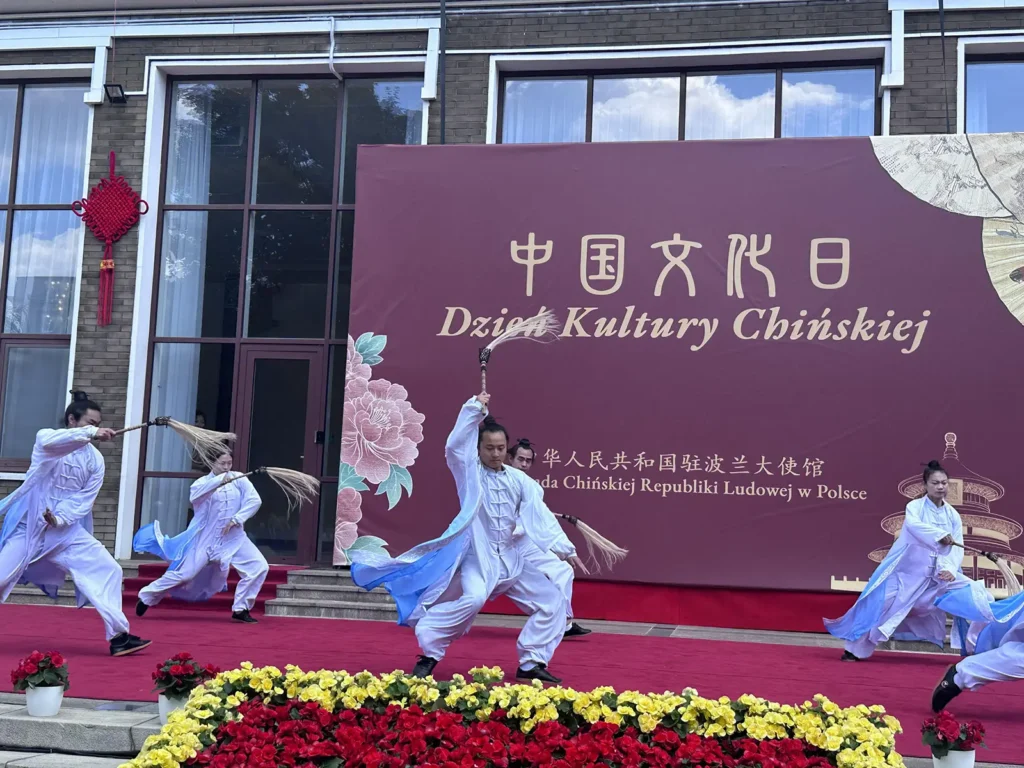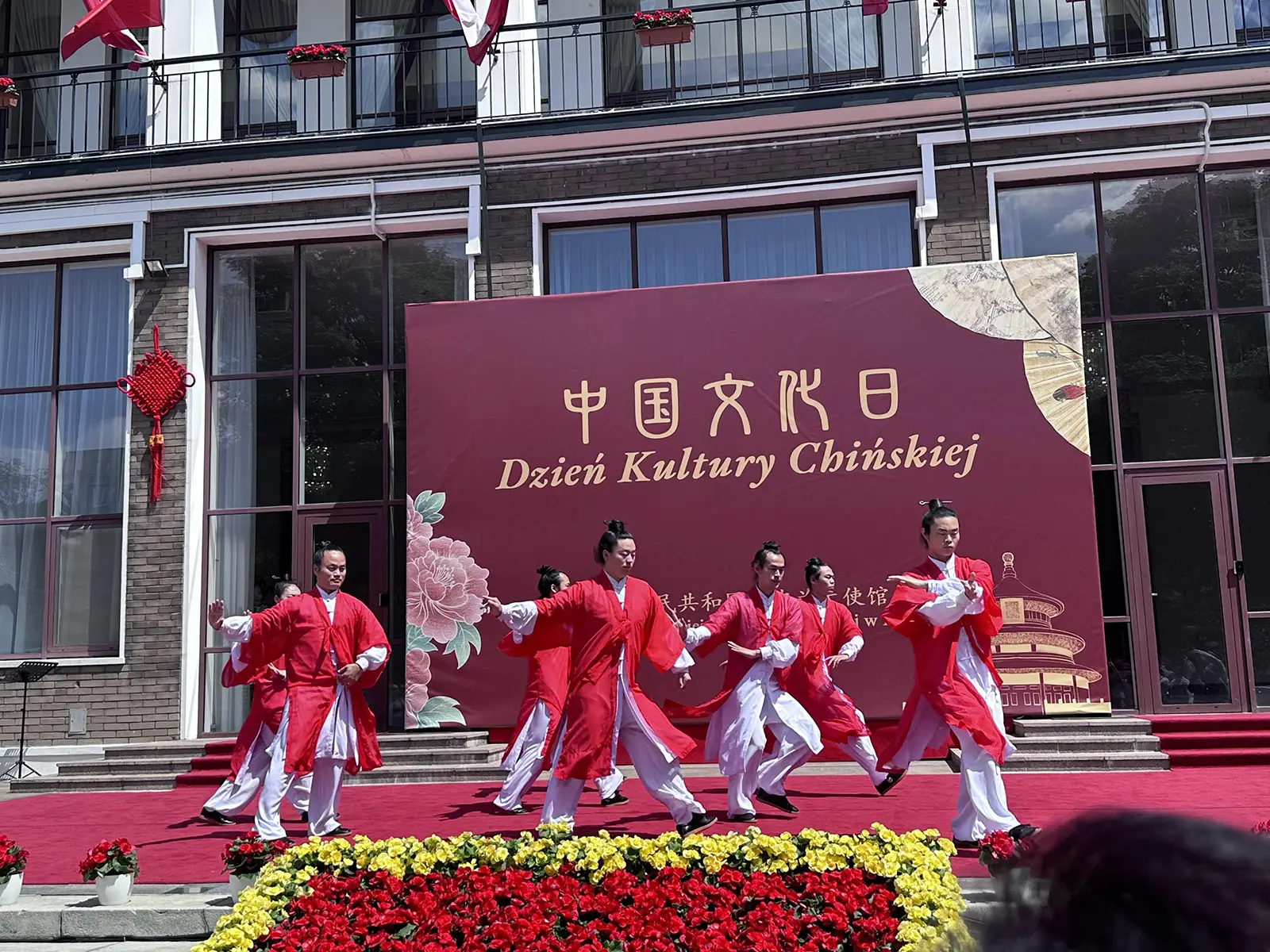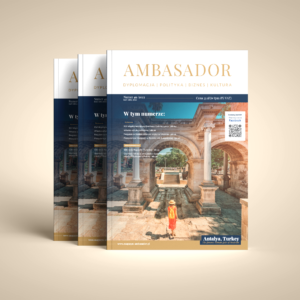On 26 June, the Ambassador of the People’s Republic of China to Poland, H.E. Sun Linijang, invited guests to a reception to celebrate Chinese Culture Day. Among the distinguished guests were: Jakub Chełstowski Marshal of the Silesian Voivodeship, Janusz Piechociński former Deputy Prime Minister of Poland, Agnieszka Skawińska President of the Polish-Chinese Friendship Society, Artur Harazim Deputy Director of the Department of Protocol of the Ministry of Foreign Affairs, Tadeusz Gajewski President of the Board of Directors of the Civic Association “Polish House”. The ceremony was celebrated in the beautiful gardens of the Chinese Embassy in Warsaw.
Guests were welcomed by the Ambassador of the People’s Republic of China to Poland, H.E. Sun Linjiang, speaking in Polish:
I would like to welcome all guests present at today’s Chinese Culture Day reception. I am very pleased to be able to celebrate China Culture Days together with such a large group of friends from both countries and to talk about the Sino-Polish friendship.
Although Poland and China are far apart on the map, the two countries share a long-standing friendship. Since the establishment of the China-Poland Comprehensive Strategic Partnership in 2016, bilateral relations have been developing healthily and steadily, and pragmatic cooperation in various fields has been growing rapidly, bringing real benefits to the people of both countries.
The official speeches were followed by artistic performances, which were announced by two young employees of the embassy, alternately in Polish and Chinese.
The first performance was a drum show performed by Zhu Dan and Han Hao under the title , ‘An ox fighting a tiger’. The piece, which involves playing two drums, originates from Jiangzhou and depicts a fight scene between an ox and a tiger. It is meant to illustrate the ox’s stubbornness and fierceness and the tiger’s power and courage.
The second performance consisted of three demonstrations put on by the Wudang martial arts troupe from Hubei entitled ‘Wind taichi’, ‘Wudang sword art’ and , ‘Wudang taiji martial art’.
The ancient Chinese believed that taichi was the state of the universe even before the separation of heaven and earth, and it is from this state that yin and yang originated. The martial art of Tai Chi, on the other hand, is meant to reflect the transformation of yin and yang. Fighting is supposed to be at once slow as slow-flowing clouds, fast as lightning, unforced and natural.

This was followed by three performances entitled ‘The spirit of wudang martial art’, ‘The martial art of xingyi’ and , ‘Taihe xuangong’ performed by the Wudang martial art troupe. In Chinese Taoism, the fuchen (also called a whisk) was an important ritual object. Taoist monks, travelling the world, used this very instrument to emphasise their majesty and quest for immortality. These performances showed us Wudang-style combat using whisks, swords and fans, while demonstrating that this martial art is a combination of rigidity and severity with softness.
The artistic part of the reception ended with a performance by a choir of Chinese students studying in Poland, who performed two Chinese songs “Molihua, or jasmine” and “Dance of youth”. The choir of young singers was awarded with thunderous applause, as were the performances of all the artists who performed.
Afterwards, guests were invited to taste the excellent Chinese cuisine. Tables with exquisite Chinese dishes were spread out in the garden, so that guests could freely taste the delicacies of Chinese cuisine.
Artistic performances were not the only demonstration of the rich Chinese culture. Chinese traditional handicrafts were also on display inside and outside the embassy building.
That’s not all the Chinese embassy had prepared on the day. A tea-making demonstration was of great interest to visitors. Little did they know that in 2022 “traditional Chinese tea-making techniques and related practices” have been inscribed on UNESCO’s list of Intangible Cultural Heritage. The tea brewing demonstration transported all participants to an ancient world and showed the beauty of Chinese traditions related to tea culture and the desire for peace and harmony in the world.
26 June was a beautiful celebration of the colourful Chinese culture in Poland.
Lorem ipsum dolor sit amet, consectetur adipiscing elit, sed do eiusmod tempor incididunt ut labore et dolore magna aliqua. Tellus in metus vulputate eu scelerisque felis imperdiet proin. Non blandit massa enim nec dui nunc mattis enim. Vestibulum rhoncus est pellentesque elit ullamcorper dignissim. Nulla porttitor massa id neque aliquam vestibulum. Odio euismod lacinia at quis risus sed vulputate odio. Laoreet sit amet cursus sit amet dictum. Elementum curabitur vitae nunc sed velit dignissim. Pulvinar elementum integer enim neque volutpat ac tincidunt vitae. Elementum integer enim neque volutpat ac tincidunt vitae semper quis. Leo vel orci porta non.


Sledź nas na: